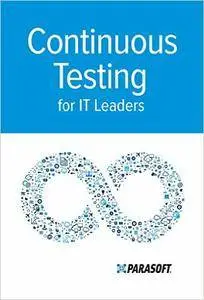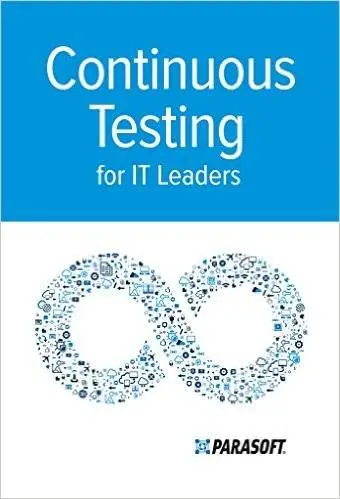Continuous Testing by Wayne Ariola
English | 2 Jan. 2014 | ISBN: 1494859750 | 72 Pages | AZW3/MOBI/EPUB/PDF (conv) | 5.32 MB
English | 2 Jan. 2014 | ISBN: 1494859750 | 72 Pages | AZW3/MOBI/EPUB/PDF (conv) | 5.32 MB
This book is written for senior development managers and business executives who need to achieve the optimal balance between speed and quality with software applications that are the primary interface with customers… and ultimately revenue. It provides a business perspective on how to accelerate the SDLC and release with confidence.
Today’s DevOps and “Continuous Everything” initiatives require the ability to assess the risks associated with a release candidate—instantly and continuously. Continuous Testing provides an automated, unobtrusive way to obtain immediate feedback on the business risks associated with a software release candidate. It guides development teams to meet business expectations and helps managers make informed trade-off decisions in order to optimize the business value of a release candidate.
Continuous Testing is NOT simply more test automation. Given the business expectations at each stage of the SDLC, Continuous Testing delivers a quantitative assessment of risk as well as actionable tasks that help mitigate risks before they progress to the next stage of the SDLC. The goal is to eliminate meaningless activities and produce value-added tasks that drive the development organization towards a successful release—safeguarding the integrity of the user experience while protecting the business from the potential impacts of application shortcomings.
From Alan Zeichick, SD Times
"Ariola and Dunlop nail the target: It’s all about risk. That’s what insurance is all about, that’s what attorneys are all about, that’s the sort of decision that every business and technology manager makes all day, every day. We have to live with risk and make tradeoffs. More testing? At some point, indeed, we have to cut it off.
It’s difficult if not impossible to assess the business risk of software quality. Yes, software quality is expensive. The higher the quality, the more time it takes to deliver software, and the greater the resources you must spend on software quality. And yes, it is expensive to have software failures—you might lose money, lose customers, suffer lawsuits, damage your brand, end up on the front page of The Wall Street Journal. Not good…
Ariola and Dunlop make a good point in their short book: We mustn’t accept that the trend toward accelerating the development process will magically improve software quality; indeed, we should expect the opposite. And if we are going to mitigate risk in today’s environment, we need to reengineer the software development process in a way that considers business risk to be one of the metrics, along with the other traditional results of our automated testing and Continuous Integration systems."



